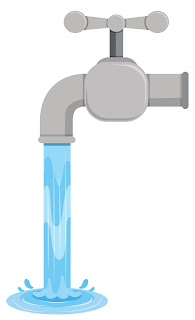Water scarcity and contamination is a global crisis that affects billions.
Water scarcity is both a natural and a human made phenomenon. There is enough fresh water on the planet for seven billion people, but it is distributed unevenly and too much of it is wasted, polluted, and unsustainably managed.
Nearly 2.2 billion people globally lack reliable access to safely managed drinking water (WHO & UNICEF 2019 )
Almost 40% of those without an improved source of drinking water live in sub-saharan africa.
Nearly 97% of the world's water is undrinkable. Another 2% is locked in ice caps and glaciers. That leaves just 1% of all of humanity needs- all its agricultural, residential, manufacturing, community, and personal needs.
Water use and demand
Each american uses an average of 82 gallons, or 310 litres of water a day at home (USGS)
Global water demands is projected to increase by 20 to 30% per year by 2050.
72% of all water withdrawals are used by agriculture, 16% by municipalities for households and services and 12% by industries.
Water wastage
Water waste is just one example of a damaging environmental factor, but it's an extremely significant one. It's very important for individuals, households and business a like to understand the impact of water waste on the environment.
How does it occur
The water waste can make reference a few key areas. The water waste from a community of people is more commonly known as sewage. Waste water can include the waste from toilets or from actions such as draining kitchen sinks.
Simply use too much water can very easily be done by anyone. Running a very long shower, loading your washing machine too regularly or leaving the tap running when brushing your teeth are all examples of how easy it is to waste this valuable resource.
What is the impact of waste water on the environment?
If sewage is not treated approximately before being disposed of it, it can contaminate water and thereby put wildlife at great risk.
Wastewater dispersed through flooding or leaks means the completely untreated water cN enter waste sources and pollute them.
The process of treating waste water also requires fossil fuels. This means that waste water treatment has the potential to increase carbon footprint and air quality.
Conservation and sustainability efforts.
Being more conservative and sustainable with water usage is the key to making a positive difference to the current water situation that is facing the world.
There are three main types of sustainability efforts.
They come in the form of
- Rules and regulations set by countries
- campaign to conserve the use of water
- Government initiatives and scheme
What to do?
To avoid the wastage of water and to conserve. The water these are the ways to reduce.
- Install low flow systems such as showerheads.
- take shorter showers and half full baths.
- Avoid laundry loads if they are only half full.
- Turn of the tap when not in use.
- Only fill the sink half full for washing up.
- Collect rain water.
- Have regular water audits conducted in business.
- Install water efficient equipment
- Educate employee on water savings practices
- Do your research on best water suppliers

Comments
Post a Comment